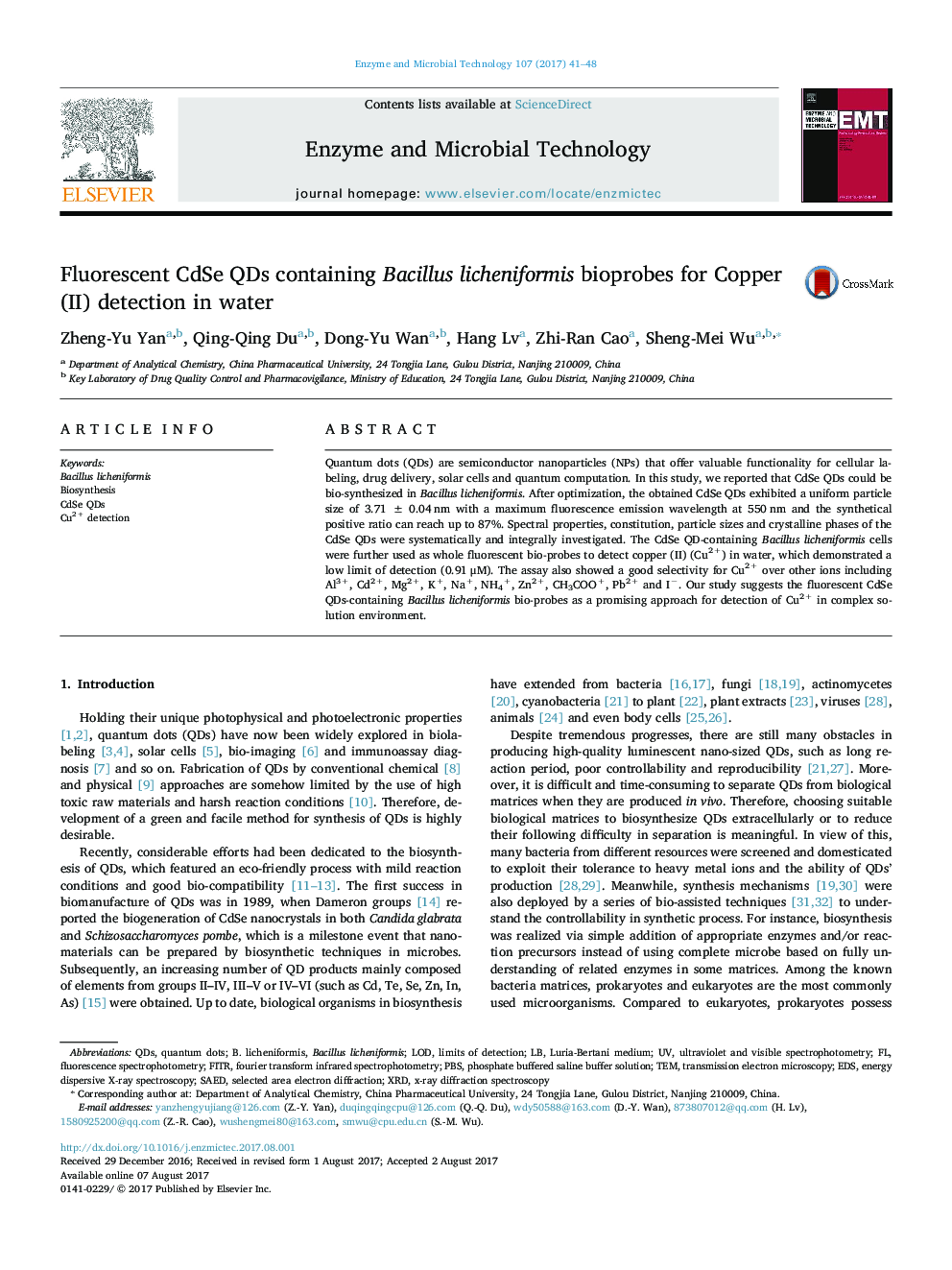| Article ID | Journal | Published Year | Pages | File Type |
|---|---|---|---|---|
| 4752691 | Enzyme and Microbial Technology | 2017 | 8 Pages |
Abstract
Quantum dots (QDs) are semiconductor nanoparticles (NPs) that offer valuable functionality for cellular labeling, drug delivery, solar cells and quantum computation. In this study, we reported that CdSe QDs could be bio-synthesized in Bacillus licheniformis. After optimization, the obtained CdSe QDs exhibited a uniform particle size of 3.71 ± 0.04 nm with a maximum fluorescence emission wavelength at 550 nm and the synthetical positive ratio can reach up to 87%. Spectral properties, constitution, particle sizes and crystalline phases of the CdSe QDs were systematically and integrally investigated. The CdSe QD-containing Bacillus licheniformis cells were further used as whole fluorescent bio-probes to detect copper (II) (Cu2+) in water, which demonstrated a low limit of detection (0.91 μM). The assay also showed a good selectivity for Cu2+ over other ions including Al3+, Cd2+, Mg2+, K+, Na+, NH4+, Zn2+, CH3COO+, Pb2+ and Iâ. Our study suggests the fluorescent CdSe QDs-containing Bacillus licheniformis bio-probes as a promising approach for detection of Cu2+ in complex solution environment.
Keywords
PBSFITRB. licheniformisQDsBacillus licheniformisSAEDEDSCdSe QDsFluorescence spectrophotometryEnergy Dispersive X-ray SpectroscopyTemBiosynthesisCu2+ detectionLOD یا Limit of detectionLuria-Bertani mediumX-ray Diffraction spectroscopylimits of detectionTransmission electron microscopyquantum dotsXRDSelected Area Electron Diffraction
Related Topics
Physical Sciences and Engineering
Chemical Engineering
Bioengineering
Authors
Zheng-Yu Yan, Qing-Qing Du, Dong-Yu Wan, Hang Lv, Zhi-Ran Cao, Sheng-Mei Wu,
